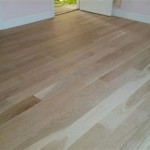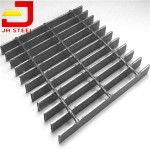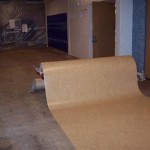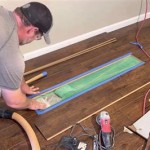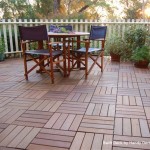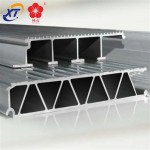Vinyl Flooring: Achieving the Bamboo Effect
Vinyl flooring has evolved significantly, now offering a wide array of visual options, including remarkably realistic imitations of natural materials like wood, stone, and even bamboo. Vinyl's inherent advantages, such as water resistance, durability, and ease of maintenance, combined with the aesthetic appeal of bamboo, make vinyl flooring with a bamboo effect a popular choice for both residential and commercial spaces.
This article will delve into the specifics of vinyl flooring with a bamboo effect, exploring its construction, benefits, installation considerations, and maintenance requirements. It aims to provide a comprehensive understanding of this flooring option, enabling informed decision-making for potential buyers.
Key Benefits of Vinyl Flooring with a Bamboo Effect
Vinyl flooring emulating bamboo offers several advantages over natural bamboo flooring. These benefits stem from the inherent properties of vinyl and its ability to mimic the appearance of bamboo convincingly.
Firstly, water resistance is a significant advantage. Natural bamboo flooring can be susceptible to water damage, warping, and mold growth if exposed to moisture. Vinyl, being inherently waterproof, eliminates this concern. This makes it suitable for installation in areas prone to moisture, such as bathrooms, kitchens, and basements. Water spills and leaks can be easily cleaned without the risk of permanent damage.
Secondly, the cost-effectiveness of vinyl flooring is noteworthy. Natural bamboo flooring can be a relatively expensive option, depending on the quality and construction. Vinyl flooring, on the other hand, is generally more affordable, providing a budget-friendly alternative to achieve a similar aesthetic. Installation costs can also be lower for vinyl, contributing to overall savings.
Thirdly, durability is a key consideration. While natural bamboo is a durable material, certain types of vinyl flooring, particularly those with a thick wear layer, can withstand heavy foot traffic and resist scratches, dents, and stains effectively. This makes vinyl with a bamboo effect a suitable choice for high-traffic areas in homes and commercial spaces. The wear layer serves as a protective shield against daily wear and tear, extending the lifespan of the flooring.
Finally, ease of maintenance is a substantial benefit. Vinyl flooring requires minimal maintenance compared to natural bamboo. Regular sweeping or vacuuming to remove dirt and debris, along with occasional mopping with a mild detergent, is typically sufficient to keep the floor clean and looking its best. Natural bamboo flooring often requires specialized cleaning products and more frequent maintenance to prevent damage and maintain its appearance.
Construction and Types of Vinyl Flooring with Bamboo Effect
Vinyl flooring comes in various constructions, each offering different performance characteristics and installation methods. Understanding these distinctions is crucial for selecting the right type of vinyl flooring with a bamboo effect for a specific application.
Sheet vinyl is a continuous, water-resistant flooring option that is typically installed in large areas. It offers a seamless appearance, minimizing the risk of water penetration. Sheet vinyl with a bamboo effect often features realistic textures and patterns that closely resemble natural bamboo. Installation usually requires professional expertise to ensure a smooth and secure fit.
Vinyl tiles are individual squares or rectangles that are installed to create a patterned or uniform look. Luxury Vinyl Tile (LVT) is a higher-end option that often features thicker construction, enhanced realism, and improved durability. LVT with a bamboo effect typically boasts a textured surface that mimics the feel of real bamboo. Vinyl tiles can be installed using adhesive or as a floating floor.
Vinyl planks are long, narrow strips that resemble hardwood flooring. Luxury Vinyl Plank (LVP) is a popular choice for achieving a realistic wood or bamboo look. LVP with a bamboo effect often features embossed textures and realistic color variations. Vinyl planks can be installed using adhesive or as a floating floor with a click-lock system. Floating floors are generally easier to install and can be a suitable option for DIY projects.
The wear layer is a critical component of vinyl flooring. It is a transparent coating that protects the underlying design layer from scratches, stains, and wear. A thicker wear layer provides greater durability and resistance to damage. For high-traffic areas, a wear layer of at least 20 mils (thousandths of an inch) is recommended. Thinner wear layers are suitable for areas with light foot traffic.
Installation Considerations for Vinyl Flooring with a Bamboo Effect
Proper installation is essential for ensuring the longevity and performance of vinyl flooring. The specific installation method will depend on the type of vinyl flooring and the subfloor conditions.
Subfloor preparation is a crucial step. The subfloor must be clean, smooth, level, and dry. Any imperfections, such as cracks, holes, or unevenness, must be addressed before installing the vinyl flooring. Self-leveling compounds can be used to create a smooth and even surface. Moisture testing is also important to ensure that the subfloor is dry enough to prevent issues with adhesion or warping.
Acclimation is often recommended for vinyl flooring, particularly LVP and LVT. This involves allowing the flooring to adjust to the temperature and humidity of the installation environment for a specified period of time, typically 48 to 72 hours. Acclimation helps to prevent expansion and contraction after installation, which can lead to gaps or buckling.
Adhesive application is critical for glued-down vinyl flooring. The appropriate adhesive should be selected based on the type of vinyl flooring and the subfloor material. The adhesive should be applied evenly and according to the manufacturer's instructions. Sufficient drying time should be allowed before walking on the flooring.
Click-lock installation is a popular method for floating vinyl floors. The planks or tiles are designed to interlock with each other, creating a secure and seamless surface. This method is generally easier to install than glued-down flooring and requires minimal tools. It is important to follow the manufacturer's instructions carefully to ensure proper alignment and locking of the planks or tiles. An underlayment can be used to provide cushioning, sound insulation, and moisture protection.
Professional installation is recommended for complex installations or for those who are not comfortable with DIY projects. Professional installers have the expertise and equipment to ensure a proper and long-lasting installation.
Considerations for specific areas also need to be taken into account. In bathrooms, ensuring a watertight seal around toilets and bathtubs is essential to prevent water damage. In kitchens, placing mats in front of sinks and stoves can help to protect the flooring from spills and stains. In high-traffic areas, using furniture pads under heavy items can help to prevent scratches and dents.
The choice of underlayment can also affect both the comfort of the flooring and its acoustic properties. Some underlayments are designed to reduce noise transmission, which can be useful in apartments or multi-story homes. Others provide cushioning, making the floor more comfortable to walk on. Some underlayments also have moisture barriers, providing additional protection against moisture from the subfloor.
Cutting vinyl flooring accurately is also important. For sheet vinyl, precise measurements and careful cutting are necessary to ensure a seamless fit. For vinyl tiles and planks, a utility knife or a specialized vinyl cutter can be used. Scoring the vinyl and then snapping it along the score line is a common technique. Sharp blades are essential for clean and accurate cuts. Using a straightedge as a guide can help to achieve straight cuts.
After installation, it's important to inspect the flooring for any imperfections or gaps. Any necessary adjustments or repairs should be made promptly to prevent further damage. A final cleaning can help to remove any dust or debris from the installation process.
Maintenance and Care of Vinyl Flooring with Bamboo Effect
Proper maintenance is key to preserving the appearance and extending the lifespan of vinyl flooring. Simple and regular care can prevent damage and keep the flooring looking its best for years to come.
Regular sweeping or vacuuming is essential to remove dirt, dust, and debris. Using a soft-bristled broom or a vacuum cleaner with a floor brush attachment is recommended. Avoid using vacuums with beater bars, as they can scratch or damage the surface of the vinyl flooring. Sweeping or vacuuming should be done at least once a week, or more frequently in high-traffic areas.
Mopping with a mild detergent is necessary for cleaning up spills and removing stains. Use a pH-neutral cleaner specifically designed for vinyl flooring. Avoid using harsh chemicals or abrasive cleaners, as they can damage the surface of the flooring. Dilute the cleaner according to the manufacturer's instructions and use a damp mop or cloth to clean the floor. Rinse the floor with clean water to remove any residue from the cleaner.
Avoid using excessive water when mopping. Excess water can seep into the seams of the flooring and cause damage to the subfloor. Wring out the mop thoroughly before mopping the floor. Use a dry cloth to wipe up any excess water.
Protect the flooring from scratches and dents by using furniture pads under heavy items. Avoid dragging furniture across the floor. Use rugs or mats in high-traffic areas to protect the flooring from wear and tear. Trim pets' nails regularly to prevent scratches.
Clean up spills immediately to prevent stains. Blot the spill with a clean cloth or paper towel. Avoid rubbing the spill, as this can spread it and make it more difficult to remove. For stubborn stains, use a specialized vinyl floor cleaner or a mixture of baking soda and water. Test any cleaner in an inconspicuous area before applying it to the entire stain.
Avoid using rubber-backed mats or rugs, as they can discolor the vinyl flooring over time. Use mats or rugs with a non-staining backing material.
Protect the flooring from direct sunlight by using curtains or blinds. Prolonged exposure to direct sunlight can cause the flooring to fade or discolor.
Avoid using steam cleaners on vinyl flooring. Steam cleaners can damage the surface of the flooring and cause it to warp or buckle.
By following these maintenance and care tips, vinyl flooring with a bamboo effect can maintain its beauty and durability for many years.

Altro Wood Safety Comfort Light Bamboo Vinyl Dct

Agrippa 2024 0471 Bamboo Beige Wood Effect Vinyl Flooring

Bolivia 539 Victoria Vinyl Flooring Buy Bamboo Effect Lino Carpets Co

Bamboo Vinyl Flooring At Com

Bamboo Wood Effect Vinyl Flooring Tenstickers

Bamboo Wood Texture Effect Vinyl Flooring Tenstickers

Bamboo Wood Effect Vinyl Flooring Tenstickers

High Density Hdf Carbonized Bamboo Floor Natural Hardwod Solid Flooring T G Home Decoration China Tiles Made In Com

Goodhome Rayong Wood Effect Bamboo Solid Flooring 2 21m² Tradepoint

Bamboo Woven Effect Wood Vinyl Flooring Tenstickers
Related Posts

